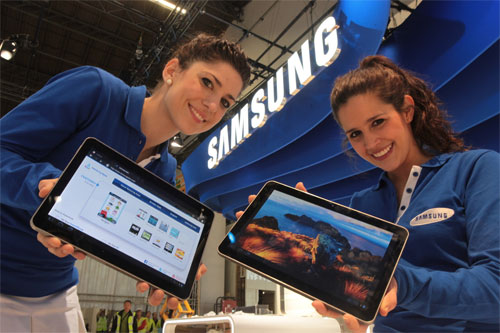A Gartner report suggests that Intel-based Chromebooks and Windows 8.1-based Haswell are likely to eat into Apple iPad and Galaxy Tab10.1 tablet market share.
Gartner on Monday said demand for ultramobiles – Chromebooks, thin and light clamshell designs, and slate and hybrid devices running Windows 8 — will come from upgrades of both notebooks and premium tablets, such as the Apple iPad or Galaxy Tab10.1.
The device market report says ultramobile devices will gain more in the fourth quarter of 2013 when the combination of new design based on Intel processors Bay Trail and Haswell running on Windows 8.1 will hit the market.
However, Gartner says these devices will only marginally help overall sales volumes initially. They are expected to help device vendors increase average selling prices (ASPs) and margins.
Earlier, IHS said driven by falling prices and a major initiative from Intel, shipments of touch-enabled mobile PCs are expected to enjoy rapid growth in 2013 and the coming years, rising to about 25 percent of all notebooks by 2016.
IHS had predicted that shipments of touchscreen-equipped notebook PCs will rise to 78 million units in 2016, up from 4.6 million in 2012.
Recently, Zane Ball, Intel vice president and general manager, Global Ecosystem Development, said: “At Intel, we have adopted a strategy that touch should be everywhere. We believe that as touch moves into the PC space, it will be a transformative product and will unlock new demand.”
By 2016, touch notebooks will represent 24.6 percent of global PC notebook shipments. This year is expected to represent a major threshold for market growth, with shipments expected to surge to 24 million, up more than 400 percent—the highest rate of growth the market is anticipated to achieve for the next four years.
The year 2013 will be a banner year for touch notebooks because prices for low-end 14-inch capacitive touchscreen display panels fall to $35—down dramatically from $60 to $70 in 2012. The $35 price will help spur widespread market acceptance, enabling the production of more affordable touchscreen mobile PCs.
Meanwhile, Gartner says devices (PCs, tablets and mobile phones) will reach 2.35 billion units in 2013, up 5.9 percent from 2012.
Traditional PC (desk-based and notebook) shipments will touch 305 million units in 2013, a 10.6 percent decline from 2012 , while the PC market including ultramobiles is forecast to decline 7.3 percent in 2013.
Tablet shipments will grow 67.9 percent, with shipments reaching 202 million units, while the mobile phone market will grow 4.3 percent, with volume of more than 1.8 billion units.
The sharp decline in PC sales recorded in the first quarter was the result in a change in preferences in consumers’ wants and needs, but also an adjustment in the channel to make room for new products hitting the market in the second half of 2013.
Table 1: Worldwide Devices Shipments by Segment (Thousands of Units)
| Device Type | 2012 | 2013 | 2014 |
| PC (Desk-Based and Notebook) | 341,273 | 305,178 | 289,239 |
| Ultramobile | 9,787 | 20,301 | 39,824 |
| Tablet | 120,203 | 201,825 | 276,178 |
| Mobile Phone | 1,746,177 | 1,821,193 | 1901,188 |
| Total | 2,217,440 | 2,348,497 | 2,506,429 |
Source: Gartner (June 2013)
The tablet and smartphone markets are facing some challenges as these devices gain longer life cycles. There has also been a shift as many consumers go from premium tablets to basic tablets. The share of basic tablets is expected to increase faster than anticipated, as sales of the iPad Mini already represented 60 percent of overall iOS sales in the first quarter of 2013.






